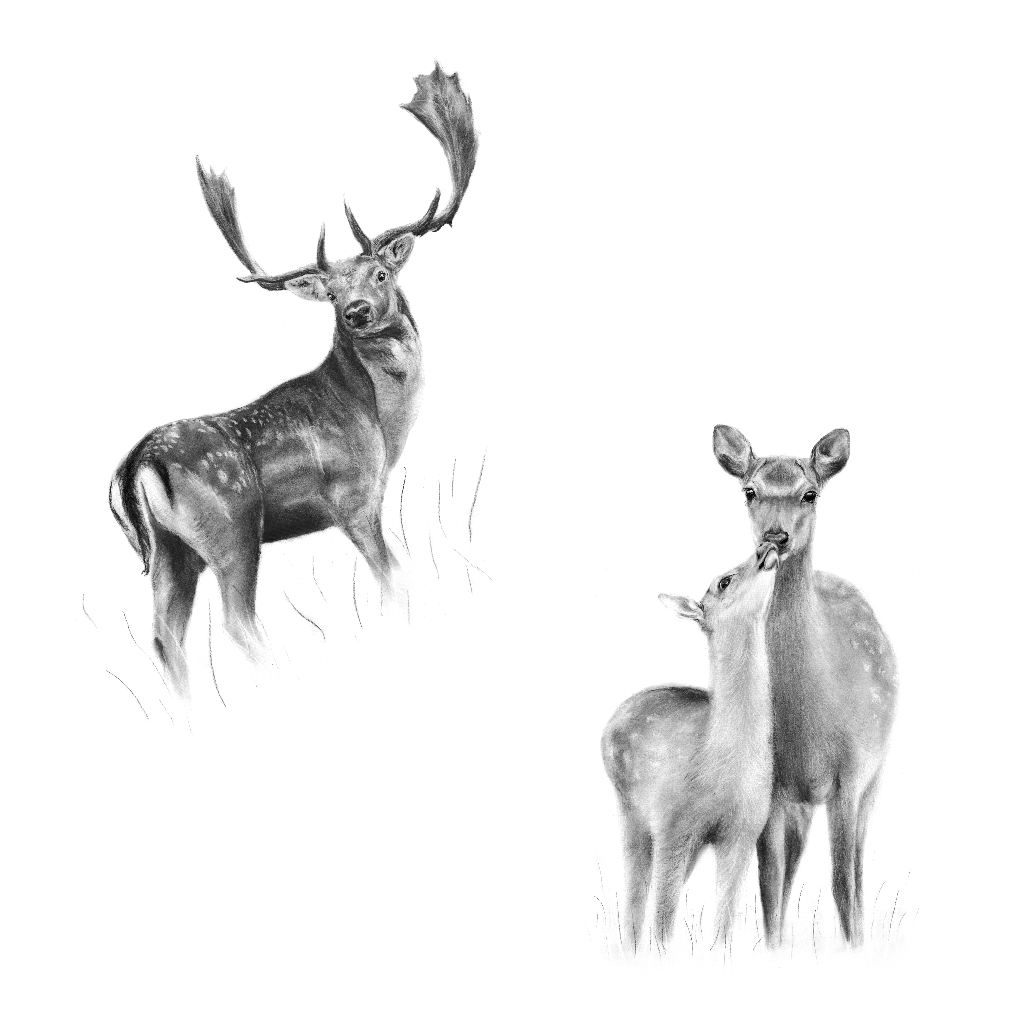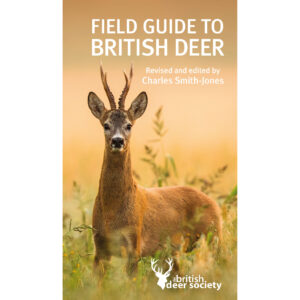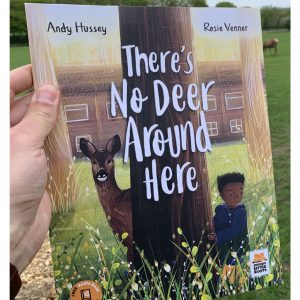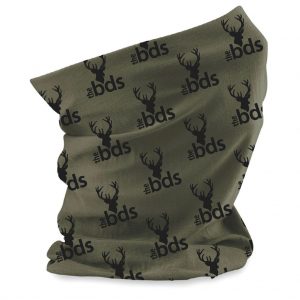ABOUT Muntjac DEER
Muntjac are a russet brown colour for most of the year, turning to a dull grey in winter.
Male muntjac called bucks, females does and the young fawn.
Reeves’ Muntjac deer are a small but stocky species of deer and when fully grown males (bucks) weigh between 10 to 18kg as adults and females (does) weigh 9 to 16kg. By comparison, an average adult man in Britain is 1.77m high and weighs 79kg.
Characteristically, they have a ‘hunched’ appearance, as their rumps are higher than their shoulders. They have a wide, flat tail, which is raised erect to display a white underside when disturbed.
Bucks have small antlers on top of long fur-covered base (pedicle). These are usually slightly incurved with no branching, but sometimes have short brow tines.
The face of the male is striped with pronounced downward black lines, light coloured cheeks and very large facial glands below the eyes. The ears are oval-shaped. Does have no antlers and a dark crown patch on their heads.
Muntjac make very small hoof prints (slots), about 2.5cm long.
0.52m
HEIGHT AT SHOULDER
18kg
WEIGHT (UP TO)
By comparison an average adult man in Britain weighs 79kg.
18 yrs
AVERAGE LIFESPAN
Mating occurs throughout the year. Their gestation period lasts from 209 to 220 days.
History, distribution & habitat
Muntjac were brought from China to Woburn Park in Bedfordshire in the early 20th century. They are now widespread and increasing in number and range.
Deliberate releases and escapes from Woburn, Northamptonshire, and Warwickshire led to the establishment of feral populations.
Movement and release by humans led to their rapid spread across south and central England and Wales, however, north of the Humber distribution is patchy but reaches close to the Scottish border.
Muntjac like deciduous or coniferous forests, preferably with a diverse understorey. They are also found in scrub and overgrown urban gardens.
Issues With Muntjac
Unlike some other species of deer in Britain, muntjac do not usually cause significant damage to agricultural or timber crops. However, they can be of important concern to gardeners, allotment owners and others. In high densities muntjac may prevent coppice regeneration and contribute to the loss of some plants of conservation importance, such as primulas.
As their numbers have increased muntjac have become more involved in deer vehicle collisions (DVC). It has been estimated in recent years that in England they could account for 25% of reported DVC.
Since 2019 they have been classed as an invasive alien species and it is now prohibited to:
- Release muntjac into the wild anywhere in England and Wales without a specific license
- Import live muntjac into the UK
- Breed muntjac in captivity
- Sell live muntjac
MUNTJAC DEER UK DISTRIBUTION
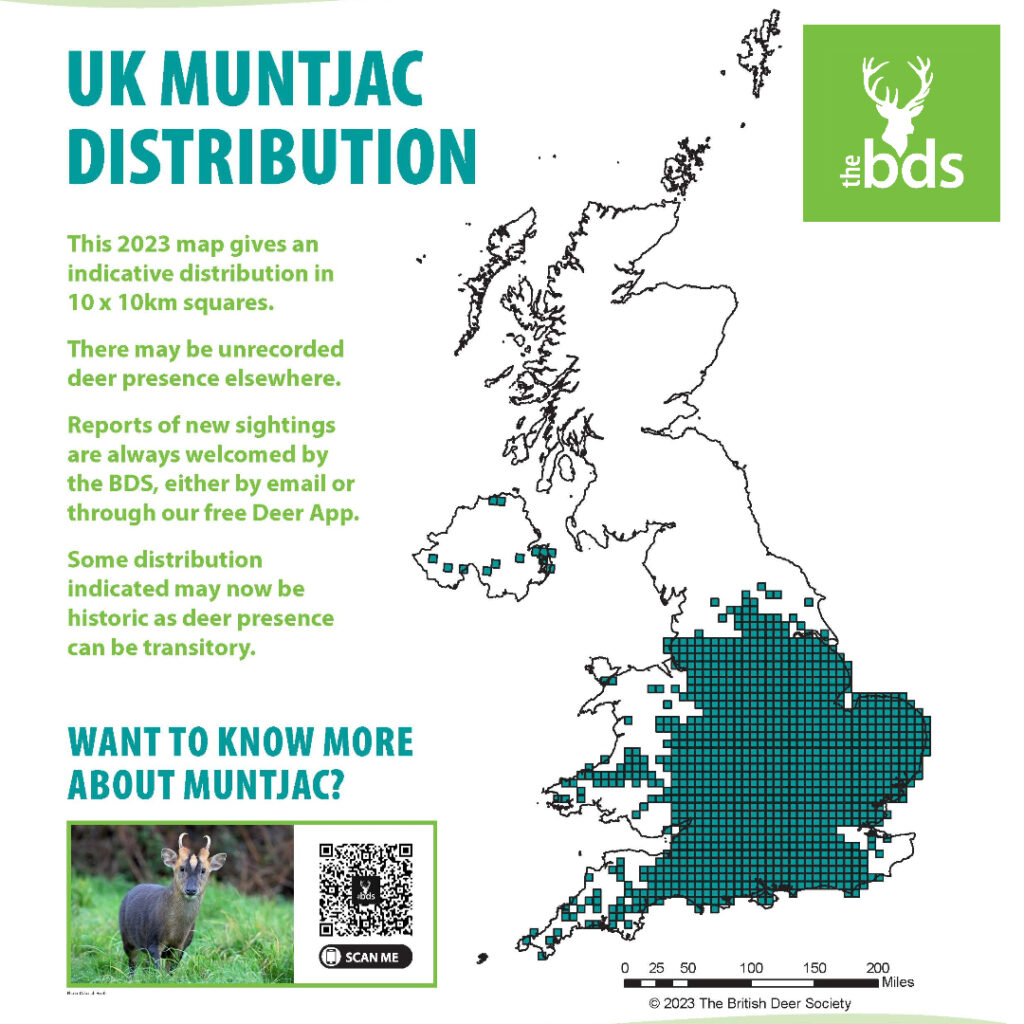
Breeding, behaviour & lifecycle
Muntjac do not have a defined breeding season (rut). Instead, they breed all year round and the does can conceive again within days of giving birth. Bucks may fight for access to does but remain unusually tolerant of subordinate males within their vicinity.
Does are capable of breeding at seven months old. After a gestation period of seven months, they give birth to a single fawn and are ready to mate again within a few days.
Bucks can live up to 16 years and does up to 19 years, but these are exceptional.
They are generally solitary or found in pairs (doe with fawn or buck with doe) although pair-bonding does not occur. Bucks defend small exclusive territories against other bucks whereas does’ territories overlap with each other and with several bucks.
Vocalisation and Activity
Also known as the ‘barking deer’, muntjac vocalise in many different situations. The bark is repeated and loud for its size. Muntjac also scream when frightened. Does and offspring communicate with a series of squeaks.
They are active throughout the 24-hour period but make more use of open spaces during the hours of darkness in populations subject to frequent disturbance. Peak activity is at dawn and dusk. Long periods are spent ‘lying up’, where the deer lies down to ruminate after feeding.





